
The Serene Beauty of Kyoto's Countryside
Discover the tranquil charm of Kyoto's countryside, where ancient temples, lush bamboo groves, and historic villages offer a peaceful escape into Japan's cultural heart.
The Kyoto countryside is a tranquil retreat from the hustle and bustle of city life. Nestled among rolling hills and lush forests, it offers a glimpse into Japan's rich cultural heritage and natural beauty. Visitors can explore ancient temples, traditional tea houses, and picturesque rice paddies, all while enjoying the serene atmosphere that the countryside provides. One of the most enchanting places to visit is the Arashiyama Bamboo Grove. Walking through the towering bamboo stalks feels like stepping into another world. Nearby, the Togetsu-kyo Bridge offers stunning views of the Katsura River, especially during cherry blossom season and autumn foliage. The countryside is also home to several historic villages, such as Ohara and Miyama. These villages are perfect for experiencing traditional Japanese rural life. Stroll through narrow lanes lined with thatched-roof houses, visit local artisan shops, and savor farm-to-table meals made with fresh, local ingredients. For those interested in history and spirituality, the Kyoto countryside boasts numerous ancient temples and shrines. The Sanzen-in Temple in Ohara is known for its beautiful gardens and serene ambiance. The Kurama-dera Temple, located on Mount Kurama, offers a challenging but rewarding hike with breathtaking views. The Kyoto countryside is not just about sightseeing. It's about immersing yourself in the slow, deliberate pace of rural Japan. Whether you're soaking in an onsen hot spring or participating in a traditional tea ceremony, the countryside offers a deep sense of peace and connection to nature.
Local tips in Kyoto countryside
- Visit in spring or autumn for the best weather and most stunning natural scenery.
- Rent a bicycle to explore the countryside at your own pace.
- Try local dishes made with seasonal ingredients at countryside restaurants.
- Consider staying in a traditional ryokan for an authentic experience.
- Carry cash, as many rural areas may not accept credit cards.
The Serene Beauty of Kyoto's Countryside
The Kyoto countryside is a tranquil retreat from the hustle and bustle of city life. Nestled among rolling hills and lush forests, it offers a glimpse into Japan's rich cultural heritage and natural beauty. Visitors can explore ancient temples, traditional tea houses, and picturesque rice paddies, all while enjoying the serene atmosphere that the countryside provides. One of the most enchanting places to visit is the Arashiyama Bamboo Grove. Walking through the towering bamboo stalks feels like stepping into another world. Nearby, the Togetsu-kyo Bridge offers stunning views of the Katsura River, especially during cherry blossom season and autumn foliage. The countryside is also home to several historic villages, such as Ohara and Miyama. These villages are perfect for experiencing traditional Japanese rural life. Stroll through narrow lanes lined with thatched-roof houses, visit local artisan shops, and savor farm-to-table meals made with fresh, local ingredients. For those interested in history and spirituality, the Kyoto countryside boasts numerous ancient temples and shrines. The Sanzen-in Temple in Ohara is known for its beautiful gardens and serene ambiance. The Kurama-dera Temple, located on Mount Kurama, offers a challenging but rewarding hike with breathtaking views. The Kyoto countryside is not just about sightseeing. It's about immersing yourself in the slow, deliberate pace of rural Japan. Whether you're soaking in an onsen hot spring or participating in a traditional tea ceremony, the countryside offers a deep sense of peace and connection to nature.
When is the best time to go to Kyoto countryside?
Iconic landmarks you can’t miss
Fushimi Inari Taisha
Explore the stunning Fushimi Inari Taisha, home to thousands of vibrant torii gates and a sacred shrine dedicated to the god of rice in Kyoto.

Kinkaku-ji
Discover the serene beauty of Kinkaku-ji, Kyoto's Golden Pavilion, a stunning Buddhist temple surrounded by exquisite gardens and rich history.
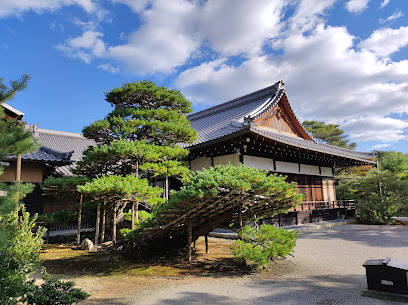
Kiyomizu-dera
Discover the breathtaking beauty and rich history of Kiyomizu-dera, Kyoto's iconic Buddhist temple and a UNESCO World Heritage site.

Nishiki Market
Discover the culinary treasures of Nishiki Market in Kyoto, where tradition meets flavor in a vibrant market atmosphere.

Nijō Castle
Experience the majestic Nijō Castle in Kyoto, a UNESCO World Heritage Site that offers a mesmerizing journey through Japan's feudal history and exquisite gardens.

Tō-ji Temple
Explore the beauty and spirituality of Tō-ji Temple, a UNESCO World Heritage site in Kyoto featuring Japan's tallest pagoda and serene gardens.
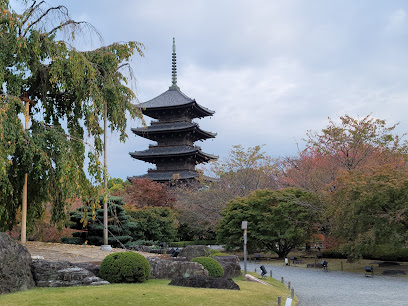
Higashiyama Jisho-ji
Discover the serene beauty of Higashiyama Jisho-ji, a stunning Buddhist temple in Kyoto surrounded by exquisite gardens and rich cultural heritage.

Rengeō-in (Sanjūsangen-dō) Temple
Explore the serene beauty of Rengeō-in (Sanjūsangen-dō) Temple, home to 1,001 Kannon statues and a tranquil atmosphere in the heart of Kyoto.
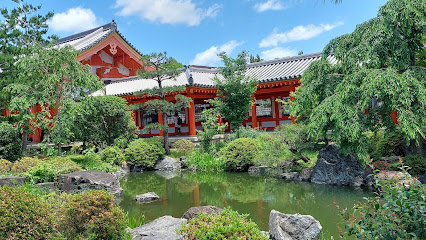
Heian Jingu
Discover the beauty and tranquility of Heian Jingu, a historic Shinto shrine in Kyoto, where culture, spirituality, and nature harmoniously converge.

Nidec Kyoto Tower
Experience breathtaking city views and rich cultural insights at Nidec Kyoto Tower, a must-visit observation deck in the heart of Kyoto.

Nanzen-ji Temple
Explore the serene beauty and historical significance of Nanzen-ji Temple, a stunning Buddhist sanctuary in the heart of Kyoto.

Kifune Shrine
Discover the spiritual charm of Kifune Shrine, an ancient Shinto sanctuary set in the breathtaking mountains of Kyoto, perfect for a serene getaway.

Arashiyama Bamboo Forest
Discover the enchanting Arashiyama Bamboo Forest in Kyoto, where towering bamboo stalks create a serene escape in nature's embrace.

Kyoto Gyoen National Garden
Discover the tranquil beauty of Kyoto Gyoen National Garden, a historical haven blending nature and culture in the heart of Japan's ancient capital.
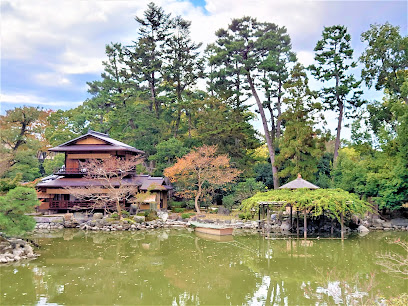
Kyoto Station
Discover Kyoto Station, an architectural marvel and cultural hub that connects you to the rich heritage and modern attractions of Kyoto.

Unmissable attractions to see
Kiyomizu-dera
Explore the beauty and serenity of Kiyomizu-dera, a historic Buddhist temple in Kyoto offering breathtaking views and spiritual experiences.

Kinkaku-ji
Experience the breathtaking beauty of Kinkaku-ji, a UNESCO World Heritage site and a stunning example of Zen Buddhist architecture in Kyoto.

Grand Front Osaka
Discover the vibrant blend of shopping, dining, and cultural experiences at Grand Front Osaka, the modern heart of Osaka's urban landscape.

Kyoto Railway Museum
Discover the fascinating history of Japan's railways at the Kyoto Railway Museum, a family-friendly attraction featuring interactive exhibits and stunning locomotives.

Namba Grand Kagetsu
Experience the vibrant world of Japanese comedy at Namba Grand Kagetsu, Osaka's premier performing arts theater for unforgettable laughter and entertainment.

Kyoto Imperial Palace
Explore Kyoto Imperial Palace - a historical landmark showcasing Japan's rich heritage, stunning architecture, and serene gardens in the heart of Kyoto.

La Collina Ōmi-Hachiman
Discover the exquisite world of Japanese sweets at La Collina Ōmi-Hachiman, a pastry paradise nestled in scenic Shiga, Japan.

Arashiyama Monkey Park Iwatayama
Explore the Arashiyama Monkey Park Iwatayama in Kyoto for an unforgettable encounter with playful macaques surrounded by stunning natural beauty.

Toei Kyoto Studio Park
Explore the enchanting world of Japanese cinema at Toei Kyoto Studio Park with thrilling rides, cultural exhibits, and stunning film sets.

Hirakata Park
Experience the excitement of Hirakata Park, an amusement park in Osaka offering thrilling rides, beautiful gardens, and fun for all ages.

Hanamikoji Street
Discover the charm of Hanamikoji Street, where traditional Kyoto meets vibrant culture, offering unique dining and unforgettable encounters.

Osaka Ikuno Korea Town
Explore the vibrant cultural tapestry of Osaka Ikuno Korea Town, where authentic Korean food, shopping, and culture await in the heart of Japan.

Kyoto City Zoo
Experience the joy of wildlife at Kyoto City Zoo, a serene and educational family-friendly attraction in the heart of Kyoto.

Kyoto City KYOCERA Museum of Art
Discover the Kyoto City KYOCERA Museum of Art, where tradition meets innovation in an inspiring showcase of artistic excellence.

Arashiyama
Discover the serene beauty of Arashiyama, Kyoto, where enchanting bamboo groves and historical temples await your exploration.

Essential places to dine
THE SODOH HIGASHIYAMA KYOTO|Restaurant
Discover the perfect fusion of Italian cuisine and Japanese elegance at The Sodoh Higashiyama in Kyoto.
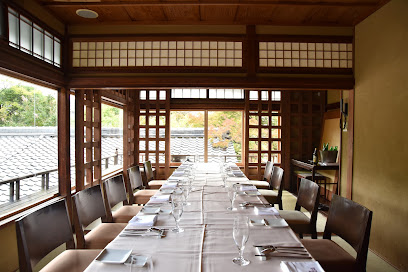
Chao Chao Sanjo Kiyamachi
Discover Kyoto's culinary scene at Chao Chao Sanjo Kiyamachi - where exquisite dim sum meets traditional Izakaya charm.

Komefuku Shijo Karasuma
Experience authentic Japanese izakaya culture at Komefuku Shijo Karasuma in Kyoto, renowned for its exquisite tempura and seasonal delights.

Katsukura - Kyoto Porta
Experience authentic tonkatsu at Katsukura in Kyoto - where tradition meets flavor in every bite.
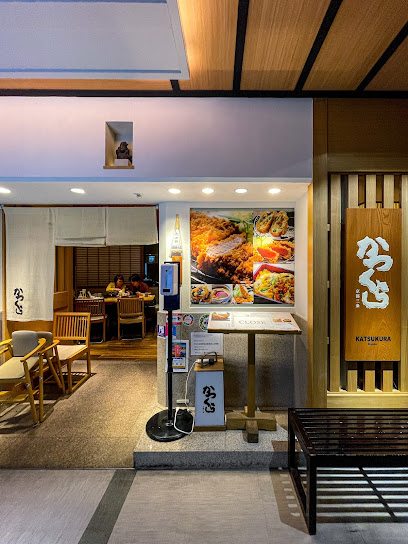
Okonomiyaki Katsu
Experience authentic okonomiyaki in Kyoto at Okonomiyaki Katsu - where flavors come alive in every savory pancake!

Mezopotamia Kebab House
Discover authentic Middle Eastern flavors at Mezopotamia Kebab House in Kyoto – a must-visit for kebab lovers seeking unforgettable tastes.

Gion Kappa Restaurant
Discover authentic Japanese cuisine at Gion Kappa Restaurant, where traditional flavors meet a cozy izakaya atmosphere in the heart of Kyoto.

Komefuku
Experience authentic Japanese cuisine at Komefuku in Kyoto, specializing in fresh seafood and exquisite tempura dishes.

Masayoshi Japanese Dining
Experience authentic Japanese steakhouse dining at Masayoshi in Kyoto—where tradition meets modern culinary excellence.

Ukiya
Experience authentic soba noodles at Ukiya in Kyoto - where tradition meets flavor in every delicious bite.

Otowa Saryo
Experience traditional Japanese cuisine and serene surroundings at Otowa Saryo in Kyoto's beautiful Higashiyama Ward.

Kikunoi Roan
Discover the essence of traditional Japanese cuisine at Kikunoi Roan, where seasonal flavors meet artistic presentation in Kyoto's heart.

Yoshikawa
Experience authentic kaiseki cuisine at Yoshikawa in Kyoto – where tradition meets culinary excellence.

Cenci
Discover Cenci in Kyoto - where exquisite Italian cuisine meets Japanese culinary artistry for an unforgettable dining experience.

Tempura Matsu
Discover the art of tempura at Tempura Matsu in Kyoto – where tradition meets culinary excellence for an unforgettable dining experience.

Markets, malls and hidden boutiques
AEON MALL KYOTO
Discover AEON MALL KYOTO: Your ultimate shopping destination with diverse shops, delicious food, and local souvenirs all in one place.

Kyoto Takashimaya Department Store
Experience the best of Kyoto shopping at Takashimaya, where tradition meets modernity in a stunning department store setting.

Takashimaya Kyoto S.C.
Experience the elegance of Takashimaya Kyoto, where shopping meets traditional Japanese culture in a vibrant department store setting.

JR Kyoto Isetan
Explore the finest shopping experience in Kyoto at JR Kyoto Isetan, where tradition meets modern luxury in a vibrant atmosphere.

Yodobashi Camera Multimedia Kyoto
Explore the ultimate shopping destination in Kyoto for electronics, gadgets, and more at Yodobashi Camera Multimedia.

Kyoto Avanti
Discover Kyoto Avanti: Where Shopping Meets Modern Elegance in the Heart of Kyoto.

ASTY Kyoto
Discover ASTY Kyoto, a vibrant shopping mall featuring traditional souvenirs, modern shops, and delicious dining options in the heart of Kyoto.

Kyoto Kawaramachi Garden
Experience Kyoto’s vibrant shopping and dining scene at Kawaramachi Garden, blending modern convenience with serene traditional beauty.
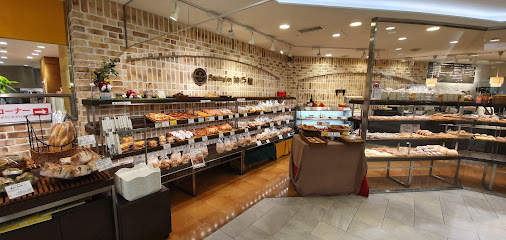
Kyoto BAL
Discover Kyoto BAL, a shopping paradise where global brands meet local treasures, all set in the heart of Kyoto's vibrant cultural scene.

Shinkyogoku Shopping Street Union
Discover the vibrant Shinkyogoku Shopping Street Union in Kyoto, where modern shopping meets traditional culture in a lively atmosphere.

kindal kyoto second hand store
Explore Kyoto's vibrant fashion scene at Kindal Second Hand Store, where unique vintage finds and sustainable shopping come together in style.

Kyoto Handicraft Center
Discover the essence of Japanese craftsmanship and cuisine at the Kyoto Handicraft Center, where tradition meets artistry in the heart of Kyoto.

Kotocross Hankyu Kawaramachi
Discover the shopping paradise of Kotocross Hankyu Kawaramachi in Kyoto, featuring a blend of trendy stores and delicious dining options.

D&DEPARTMENT KYOTO
Explore D&DEPARTMENT KYOTO: where unique Japanese gifts meet delightful café treats in a charming setting.

Harajuku Chicago Kyoto Store
Explore Harajuku Chicago Kyoto Store for unique thrift finds and sustainable fashion in the heart of Kyoto's Nakagyo Ward.
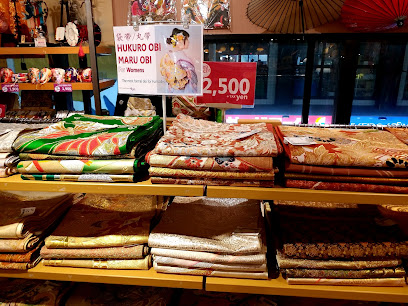
Essential bars & hidden hideouts
L'Escamoteur
Experience the magic of expertly crafted cocktails at L'Escamoteur, Kyoto's enchanting cocktail bar in the heart of the city.

Bar Rocking chair
Discover the exciting nightlife at Bar Rocking Chair, Kyoto's premier cocktail bar, offering a diverse selection of drinks in a vibrant atmosphere.
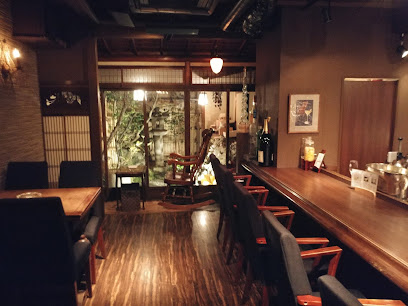
Man in the Moon - Kyoto Station Pub
Discover the unique blend of Irish and Japanese hospitality at Man in the Moon, Kyoto's beloved pub near the station.
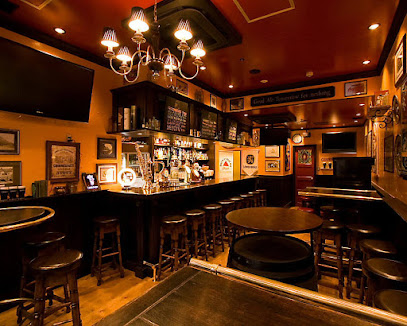
Pig & Whistle
Discover Pig & Whistle, a charming pub in Kyoto offering a delightful blend of local cuisine, craft beers, and a warm, inviting atmosphere.

Bar K6
Discover the perfect blend of modern cocktails and traditional ambiance at Bar K6, a lively bar in the heart of Kyoto's nightlife.

The Common One Bar Kyoto
Discover Kyoto's vibrant nightlife at The Common One Bar, where authentic cocktails meet a cozy atmosphere, perfect for every traveler.
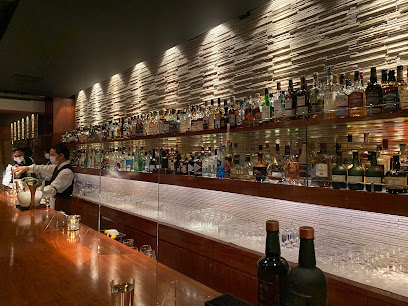
bar K-ya main building
Experience the vibrant nightlife of Kyoto at Bar K-ya, where cozy ambiance meets an eclectic drink selection in the heart of the city.

Bar Fishbowl
Discover the vibrant nightlife of Kyoto at Bar Fishbowl, where innovative cocktails and stunning city views await you.

SAMGHA
Discover SAMGHA, Kyoto's premier wine bar, offering an exceptional selection of beverages in a cozy and welcoming atmosphere.

Bar Ixey
Discover the enchanting atmosphere and exquisite drinks at Bar Ixey, a beloved bar in the heart of Kyoto's Higashiyama Ward.

Turquoise Bar
Experience the vibrant nightlife of Kyoto at Turquoise Bar, renowned for its exquisite cocktails and lively atmosphere.

cafe&bar Miltons Kyoto
Experience the vibrant nightlife of Kyoto at Miltons, a cozy bar offering exceptional drinks and a welcoming atmosphere in Nakagyo Ward.

Oku
Experience the enchanting atmosphere of Oku, a hidden bar in Kyoto offering exquisite cocktails and a cozy ambiance for the perfect night out.

Bar Cordon Noir
Discover the enchanting Bar Cordon Noir in Kyoto, where exquisite whiskies and a cozy atmosphere await every visitor.

The Roots of all evil.
Discover Kyoto's vibrant nightlife at The Roots of All Evil, a bar where innovative cocktails and a welcoming atmosphere meet.
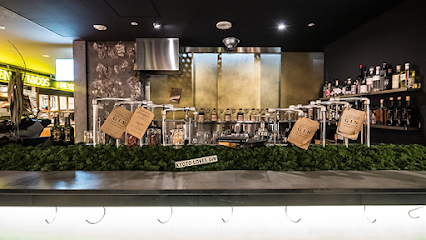
Local Phrases about Kyoto countryside
-
- Helloこんにちは
[kon-ni-chi-wa] - Goodbyeさようなら
[sa-yo-u-na-ra] - Yesはい
[ha-i] - Noいいえ
[i-i-e] - Please/You're welcomeどうぞ
[do-u-zo] - Thank youありがとうございます
[a-ri-ga-to-u go-za-i-ma-su] - Excuse me/Sorryすみません
[su-mi-ma-se-n] - How are you?お元気ですか?
[o-ge-n-ki de-su ka] - Fine. And you?元気です。あなたは?
[ge-n-ki de-su. a-na-ta wa?] - Do you speak English?英語を話せますか?
[e-i-go o ha-na-se-ma-su ka?] - I don't understandわかりません
[wa-ka-ri-ma-se-n]
- Helloこんにちは
-
- I'd like to see the menu, pleaseメニューを見せてください
[me-ni-u o mi-se-te ku-da-sa-i] - I don't eat meat肉を食べません
[ni-ku o ta-be-ma-se-n] - Cheers!乾杯!
[kan-pai] - I would like to pay, pleaseお会計をお願いします
[o-kai-ke-i o o-ne-ga-i shi-ma-su]
- I'd like to see the menu, pleaseメニューを見せてください
-
- Help!助けて!
[ta-su-ke-te] - Go away!去ってください!
[sa-t-te ku-da-sa-i] - Call the Police!警察を呼んで!
[ke-i-sa-tsu o yo-n-de] - Call a doctor!医者を呼んで!
[i-sha o yo-n-de] - I'm lost道に迷っています
[mi-chi ni ma-ya-t-te i-ma-su] - I'm ill病気です
[byo-u-ki de-su]
- Help!助けて!
-
- I'd like to buy...買いたいです...
[ka-i-ta-i de-su...] - I'm just looking見てるだけです
[mi-te-ru da-ke de-su] - How much is it?いくらですか?
[i-ku-ra de-su ka?] - That's too expensiveそれは高すぎます
[so-re wa ta-ka-su-gi-ma-su] - Can you lower the price?値下げしてもらえますか?
[ne-sa-ge shi-te mo-ra-e-ma-su ka?]
- I'd like to buy...買いたいです...
-
- What time is it?今何時ですか?
[i-ma na-n-ji de-su ka?] - It's one o'clock1時です
[i-chi-ji de-su] - Half past (10)10時半です
[ju-u-ji ha-n de-su] - Morning朝
[a-sa] - Afternoon昼
[hi-ru] - Evening夕方
[yu-u-ga-ta] - Yesterday昨日
[ki-n-o-u] - Today今日
[kyo-u] - Tomorrow明日
[a-shi-ta] - 1一
[i-chi] - 2二
[ni] - 3三
[sa-n] - 4四
[shi] - 5五
[go] - 6六
[ro-ku] - 7七
[na-na] - 8八
[ha-chi] - 9九
[ku] - 10十
[ju-u]
- What time is it?今何時ですか?
-
- Where's a/the...?…はどこですか?
[... wa do-ko de-su ka?] - What's the address?住所は何ですか?
[ju-u-sho wa na-n de-su ka?] - Can you show me (on the map)?地図で見せてもらえますか?
[chi-zu de mi-se-te mo-ra-e-ma-su ka?] - When's the next (bus)?次の(バス)はいつですか?
[tsu-gi no (ba-su) wa i-tsu de-su ka?] - A ticket (to ....)チケット(…まで)
[chi-ke-t-to (... ma-de)]
- Where's a/the...?…はどこですか?
History of Kyoto countryside
-
The Kyoto countryside is steeped in history that dates back thousands of years. Archaeological finds suggest that the area was inhabited by the Jomon people, known for their pottery, as early as 10,000 BCE. These early settlers laid the groundwork for the rich culture that would develop in the region.
-
During the Heian Period (794-1185), Kyoto became the capital of Japan, and its countryside flourished as well. Aristocrats and nobles built expansive estates and temples in the surrounding areas, contributing to the cultural and architectural richness that defines the region. Notable temples such as Byodoin in Uji, constructed in 998, are remnants of this era.
-
In the Kamakura Period (1185-1333) and subsequent Muromachi Period (1336-1573), Kyoto's countryside saw the rise of samurai culture. Castles were built, including the famous Kameyama Castle in Kameoka. These fortresses were not only military bases but also centers of governance and culture, influencing local agriculture and trade.
-
The Edo Period (1603-1868) brought relative peace and stability to Japan, allowing the Kyoto countryside to thrive agriculturally. The construction of the Tokaido road facilitated trade and travel, and the area became known for its high-quality tea and silk production. Villages such as Wazuka became famous for their tea plantations, a tradition that continues to this day.
-
The Meiji Restoration of 1868 marked a period of rapid modernization and industrialization for Japan. The Kyoto countryside saw significant changes, including the introduction of modern farming techniques and the construction of railways. Despite these advancements, the region managed to preserve much of its traditional charm and historical sites.
-
During World War II, the Kyoto countryside was relatively spared from the extensive bombing that other parts of Japan experienced. However, the post-war period brought challenges as Japan rebuilt its economy. The area saw a resurgence in tourism, with people flocking to its historical sites, scenic beauty, and traditional crafts.
-
Today, the Kyoto countryside is a harmonious blend of past and present. Efforts to preserve its historical and cultural assets have been successful, resulting in numerous UNESCO World Heritage sites. Festivals such as the annual tea-picking festival in Wazuka and the fire rituals at Kurama-dera Temple attract visitors from around the world, keen to experience the timeless traditions of this storied region.
Kyoto countryside Essentials
-
The Kyoto countryside can be accessed from Kyoto city, which is well-connected by train from major cities like Tokyo and Osaka. From Kyoto Station, local trains and buses will take you to various towns and villages in the countryside. The JR Sagano Line is popular for reaching scenic areas such as Arashiyama. Alternatively, you can rent a car to explore more remote areas at your own pace.
-
Public transportation in the Kyoto countryside includes trains, buses, and taxis. The JR lines and local buses connect most towns and villages. Renting a bicycle is also a great way to explore smaller areas. For more freedom, consider renting a car. Note that rural areas may have limited public transport options, so plan accordingly.
-
The official currency in Japan is the Japanese Yen (JPY). Credit cards are widely accepted in larger hotels and restaurants, but cash is still king, especially in rural areas. ATMs are available at convenience stores like 7-Eleven, which accept international cards. Make sure to have enough cash for smaller establishments and local markets.
-
The Kyoto countryside is generally very safe for tourists. Crime rates are low, but it is always advisable to take standard precautions such as not leaving your belongings unattended. There are no specific high-crime areas targeting tourists, but being aware of your surroundings and staying in well-lit areas at night is recommended.
-
In case of emergency, dial 110 for police and 119 for fire or medical assistance. Most towns have police stations and medical facilities. It is advisable to have travel insurance that covers medical emergencies. Pharmacies are available for minor health issues. For non-Japanese speakers, seeking help at larger hospitals in Kyoto city may be more effective.
-
Fashion: Do wear comfortable and modest clothing, especially when visiting temples and shrines. Avoid flashy or revealing attire. Religion: Do respect local customs; bow when entering shrines and remove shoes when required. Public Transport: Do queue patiently and keep noise to a minimum. Don't speak loudly or use your phone on trains. Greetings: Do bow slightly as a sign of respect. Saying 'Konnichiwa' (hello) is polite. Eating & Drinking: Do try local foods and always say 'Itadakimasu' before eating and 'Gochisousama' after finishing. Don't leave food uneaten as it is considered wasteful.
-
To experience Kyoto countryside like a local, participate in seasonal festivals and visit local onsens (hot springs). Try traditional crafts like pottery in towns such as Kameoka. Visit local markets for fresh produce and handmade goods. Engage with locals, who are generally friendly and willing to share their culture. Don't miss the scenic beauty of places like the Kiyotaki River and the rural landscapes of Miyama village.
Trending Landmarks in Kyoto countryside
Nearby Cities to Kyoto countryside
-
Things To Do in Nara
-
Things To Do in Osaka
-
Things To Do in Nagoya
-
Things To Do in Kanazawa
-
Things To Do in Hiroshima
-
Things To Do in Tokyo
-
Things To Do in Fukuoka
-
Things To Do in Ulsan
-
Things To Do in Pohang
-
Things To Do in Gyeongju
-
Things To Do in Busan
-
Things To Do in Andong
-
Things To Do in Daegu
-
Things To Do in Suncheon
-
Things To Do in Daejeon













